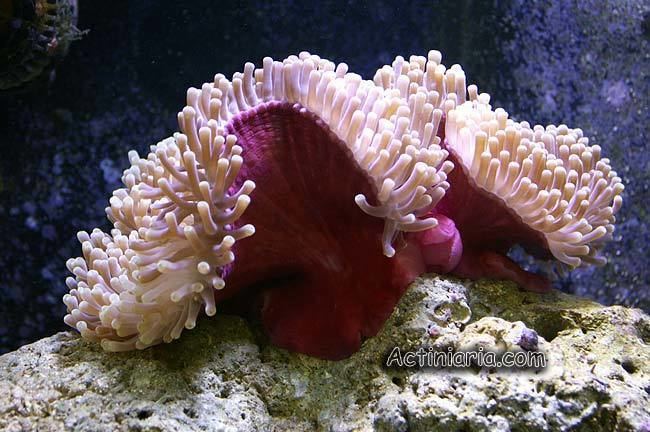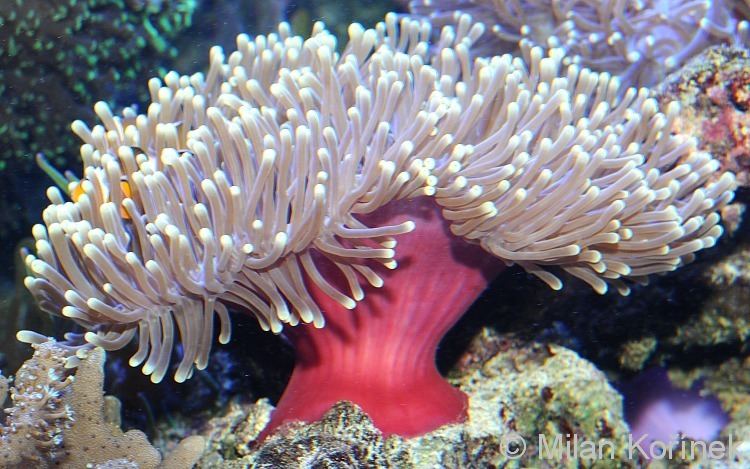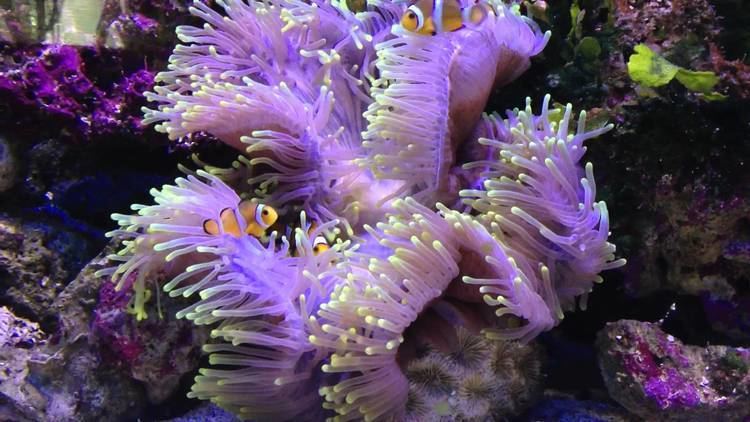Order Actiniaria Genus Heteractis Higher classification Heteractis | Scientific name Heteractis magnifica Rank Species | |
 | ||
Similar Sea anemone, Actinia, Anemonia | ||
Heteractis magnifica ritteri magnifica anemone
The magnificent sea anemone (Heteractis magnifica), also known as the Ritteri anemone, is a species of sea anemone belonging to the Stichodactylidae family native from the Indo-Pacific area.
Contents
- Heteractis magnifica ritteri magnifica anemone
- Heteractis magnifica ritteri anemone wmv
- Description
- Distribution habitat
- Biology
- Gallery
- References

Heteractis magnifica ritteri anemone wmv
Description

The magnificent sea anemone is characterized by a flared oral disc which reaches between 20 and 50 centimeters in diameter but in some specimens this can reach one meter. The oral disc, the base of the tentacles, and the oral orifice have the same color going from light beige to white.

The numerous tentacles are exceeding 8 centimeters long. The sea anemone, being a member of the Hexacorallia, usually carries tentacles in multiples of 6 that are positioned in concentric circles. Their tips are fingered and often lighter in coloration than the tentacle body and are sometimes vividly colored.

Its scientific and vernacular names come from the bright color of the column, which is the visible outer structure when the animal retracts, and these range from electric blue to green, red, pink, purple or brown.
Distribution & habitat

The magnificent sea anemone is widespread throughout the tropical and subtropical waters of the Indo-Pacific area from the eastern coasts of Africa, Red Sea included, to Polynesia and from south Japan to Australia and New-Caledonia

This anemone likes hard substrates well exposed to light and current from the surface to 20 meters deep. While usually found down to 20 meters deep, it has been observed down to 40 meters deep.
Biology
The magnificent sea anemone has two feeding methods. The first one is through the photosynthesis of its symbiotic zooxanthellae, living in its tissues. And the second method is by capturing its prey with its tentacles that allow it to immobilize its prey (small invertebrates, fry or juvenile fish).
The reproduction of the anemone can be sexual by simultaneous transmission of male and female gametes in the water or asexual by scissiparity. This means that the anemone divides itself into two separate individuals from the foot or the mouth. The magnificent sea anemone is found as solitary specimens throughout its range with aggregations only being found in the rim areas of its distribution. Genetic analyses does not suggest a difference between solitary specimens in the central distribution and clustering specimens at the rim. Asexual reproduction is found only in the rim areas and is probably the origin of the large aggregations.
The relationship between anemonefish and their host sea anemones is highly nested in structure. With 12 species of hosted anemonefish, the magnificent sea anemone is highly generalist. The anemonefish it hosts are also mostly generalist, with the A. pacificus being only hosted by H magnifica. The other specialised fish is A. akallopisos which is also hosted by Stichodactyla mertensii. The species of anemonefish hosted by the magnificent sea anemone are:
H. magnifica also hosts Dascyllus trimaculatus, the threespot dascyllus, and various commensal shrimps.
Gallery
Symbionts in H. magnifica
